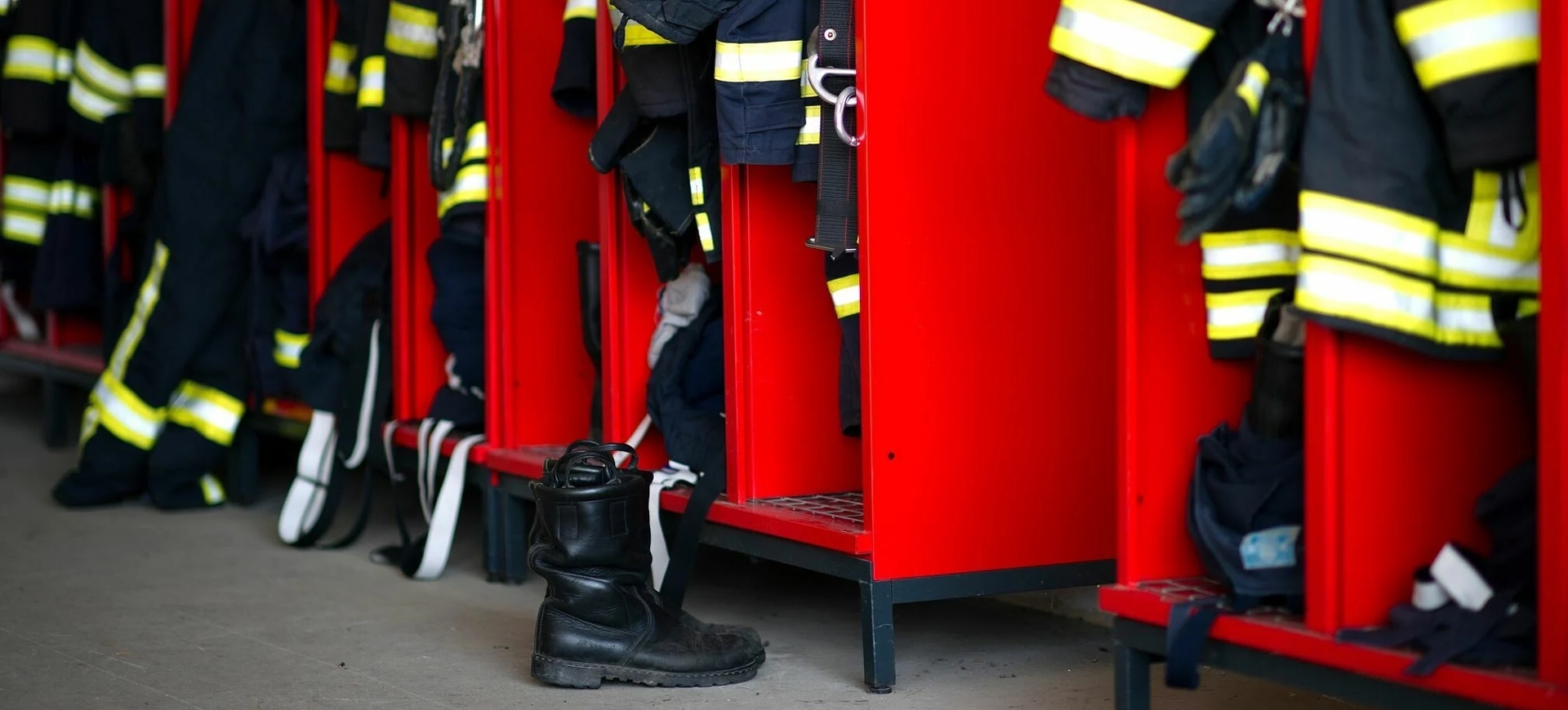- Blog
- Emergency Services: What You Need to Know
Emergency Services: What You Need to Know
Effective: 20/12/2023


Emergency Services: What You Need to Know
When faced with an emergency, knowing what to do and who to call can make all the difference. Emergency services are the backbone of any community, providing assistance in times of crisis and ensuring the safety and well-being of individuals. In this article, we will delve into the world of emergency services and provide you with the essential information you need to know.
Understanding the Role of Emergency Services
Emergency services play a vital role in society by responding promptly to calls for help and providing immediate aid in critical situations. Whether it’s a medical emergency, a fire, or a crime in progress, these dedicated professionals are trained to handle various emergencies with skill and efficiency. Their primary objective is to save lives, protect property, and restore order.
When an emergency strikes, time is of the essence. Emergency services are the frontline responders, ready to spring into action at a moment’s notice. They are the heroes who rush to the scene, armed with the knowledge and expertise to tackle any crisis. Their quick response and effective action can mean the difference between life and death, between containing a fire and watching it spread rapidly. They provide a sense of security and peace of mind to communities, ensuring that help is just a phone call away.
The Importance of Emergency Services
Emergency services are the backbone of any society, working tirelessly to keep us safe. They are the unsung heroes who put their lives on the line to protect and serve. These brave men and women are driven by a sense of duty and a commitment to public safety. They work long hours, often in high-stress environments, to ensure that we can sleep soundly at night, knowing that help is always within reach.

Emergency services go beyond just responding to emergencies. They also play a crucial role in prevention and preparedness. They conduct training exercises, educate the public on safety measures, and collaborate with other agencies to develop comprehensive emergency response plans. Their dedication and proactive approach help minimize the impact of disasters and ensure a swift recovery.
Different Types of Emergency Services
Emergency services encompass a range of professionals and organizations, each specializing in a specific area. Together, they form a cohesive network that works seamlessly to protect and serve the community. Let’s take a closer look at some of the key services:
These are just a few examples of the different types of emergency services that work together to keep our communities safe. Each service plays a unique role, but they all share a common goal: to protect and serve the public in times of need.
When to Call Emergency Services
In certain situations, time is of the essence, and contacting emergency services is crucial. It’s important to recognize when to call for immediate assistance.
Imagine this scenario: you’re hiking in a remote area, enjoying the beauty of nature, when suddenly, you witness a fellow hiker stumble and fall. As you rush to their side, you notice blood gushing from a deep gash on their leg. Panic sets in, and you realize that time is of the essence. In situations like these, calling emergency services can be a lifesaver.
Recognizing Life-Threatening Situations
If you or someone around you is experiencing severe injuries, difficulty breathing, chest pain, sudden loss of consciousness, uncontrolled bleeding, or a suspected heart attack or stroke, it’s essential to call emergency services without delay. These situations require immediate medical attention, and contacting emergency services can ensure that help arrives promptly.
Let’s delve deeper into the importance of recognizing life-threatening situations. Imagine you’re at a crowded restaurant, enjoying a meal with friends, when suddenly, a person at a nearby table collapses. Panic fills the air as people scramble to help. In this critical moment, calling emergency services can mean the difference between life and death. The trained professionals on the other end of the line can provide step-by-step instructions on how to perform CPR or administer first aid until medical help arrives.
Non-Emergency Situations: What to Do
While emergency services are primarily for life-threatening situations, they can also provide assistance and guidance in non-emergency scenarios. If you are unsure whether a situation requires immediate attention, it is better to err on the side of caution and dial emergency services. The trained personnel on the other end of the line will assess the situation and guide you accordingly.
Consider this situation: you’re at home, enjoying a quiet evening, when suddenly, your elderly neighbor knocks on your door in distress. She explains that she accidentally took too much medication and is feeling unwell. While it may not be a life-threatening emergency, it’s crucial to act swiftly. By calling emergency services, you can ensure that medical professionals evaluate her condition and provide appropriate care.
It’s important to remember that emergency services are not just for life-or-death situations. They are there to assist and support you in times of need, no matter the severity of the situation. Whether it’s a minor accident, a sudden illness, or a concern about someone’s well-being, don’t hesitate to reach out for help.
How to Contact Emergency Services
Knowing how to contact emergency services effectively is crucial to ensure a swift response when every second counts. In times of crisis, it is essential to have the knowledge and presence of mind to reach out for help promptly.
When faced with an emergency, it is natural to feel overwhelmed and anxious. However, it is important to stay calm and focused, as this will enable you to communicate effectively with emergency services. By providing accurate information and following the proper protocols, you can assist the responders in delivering the necessary aid efficiently.
Dialing Emergency Numbers
The three-digit emergency number varies depending on your country. In the United States, 911 is the commonly recognized emergency number, while other countries may use different combinations such as 112 or 999. It is crucial to familiarize yourself with the emergency number in your area, as it can save precious time during a crisis. Take the time to research and memorize the appropriate emergency number, ensuring that it is readily accessible to you and your family.
Moreover, it is important to note that in some countries, different emergency numbers are designated for specific situations. For example, in the United Kingdom, 999 is the general emergency number, but 111 is used for non-life-threatening situations. Understanding these distinctions can help you navigate the emergency services more effectively, ensuring that you receive the appropriate assistance for your specific needs.
Information to Provide When Calling
When calling emergency services, try to stay calm and provide accurate information. Speak clearly and be prepared to provide the following:
Remember, the more accurate and detailed your information, the better equipped emergency services will be to handle the situation. Stay on the line until the operator advises you to hang up, as they may need additional information or instructions to guide you through the emergency until help arrives.
By understanding the process of contacting emergency services and providing the necessary information, you play a vital role in facilitating a swift and effective response. Your calmness and cooperation can make a significant difference in times of crisis, potentially saving lives and minimizing the impact of emergencies.
The Process After Calling Emergency Services
Once you’ve made the call, it’s crucial to understand what happens next and how to prepare for the arrival of emergency services.
What Happens When You Call
When you contact emergency services, your call is answered by a trained operator who will gather essential details about the situation and dispatch the appropriate emergency responders. They may provide instructions over the phone while help is on the way. Stay on the line until instructed otherwise.
Preparing for the Arrival of Emergency Services
While waiting for emergency services to arrive, it’s important to take precautionary measures to ensure the safety of yourself and others. If possible, move to a safe location and clear the area of any potential hazards. If you have any relevant medical information, gather it to provide to the responders when they arrive.
Tips for Interacting with Emergency Services
Interacting with emergency services in a calm and cooperative manner can aid in a smooth resolution of the situation.
Cooperation with Emergency Responders
Follow the instructions provided by the emergency responders promptly and to the best of your ability. They are highly trained professionals who understand how to handle emergencies effectively. Cooperating with them will help ensure a positive outcome.
Ensuring Your Safety and That of Others
Take steps to ensure your own safety and the safety of others around you. Avoid interfering with the emergency response efforts unless instructed by the responders. By staying out of their way, you allow them to work efficiently and provide the necessary assistance.
Emergency services are the backbone of our communities, providing comfort and care in times of distress. Understanding their role, knowing when to call, and how to interact with them can empower you to take action during an emergency. By being prepared and proactive, we can all contribute to a safer and more resilient society.
In the fast-paced world of emergency services, efficiency and rapid response are paramount. Smart locker systems have emerged as a key technology in this sector, significantly enhancing the readiness and effectiveness of emergency teams. These innovative storage solutions, found at the heart of many modern emergency services, provide secure, organized, and easily accessible storage for critical equipment and supplies. By ensuring that vital tools are readily available and properly maintained, smart lockers help reduce response times and improve overall emergency service delivery.
The integration of smart lockers in emergency services has significantly transformed how essential equipment and supplies are stored and accessed. These sophisticated systems, which include a range of functionalities from parcel lockers to IT and asset management, offer a secure and efficient way of storing crucial emergency tools and medications. The automated nature of these lockers ensures quick and easy access, which is pivotal in emergency situations where every second counts. Moreover, the integration of locker software and wired locking systems has further enhanced the security and tracking of sensitive items, ensuring they are accessible only to authorized personnel.
As the role of smart lockers in emergency services continues to evolve, we are witnessing a significant shift towards more efficient and responsive emergency care. These systems, which extend from pharmacy to public spaces, represent a vital component in the modernization of emergency services. Looking ahead, the future of smart lockers in these critical sectors is bright, with advancements such as AI integration and IoT connectivity poised to further enhance their functionality. The ongoing development of battery locking systems and expansion into more branches of emergency services underscore the growing importance of these innovative storage solutions in safeguarding communities.
Smart lockers streamline the storage and access of critical equipment, allowing for quicker response times and better organization in emergency situations.
Yes, smart lockers can be integrated with various technologies, such as emergency service systems, for enhanced communication and efficiency.
Emergency smart lockers can store a range of items, from medical supplies and equipment to communication devices, all crucial for effective emergency response.
Absolutely, smart lockers offer robust security features like advanced locking mechanisms to ensure sensitive equipment is securely stored and accessed only by authorized personnel.
By providing secure and organized storage, smart lockers ensure that emergency equipment is maintained in optimal condition and readily available, contributing to overall operational safety.
Future innovations may include greater integration with AI for predictive analytics, enhanced IoT connectivity for real-time tracking, and customizable storage solutions to meet specific emergency service needs.
Are you interested in one of the locking solutions or would you like more information about the possibilities for your company? We’d be happy to welcome you to our showroom for a pleasant initial meeting, free of obligation.
Contact us